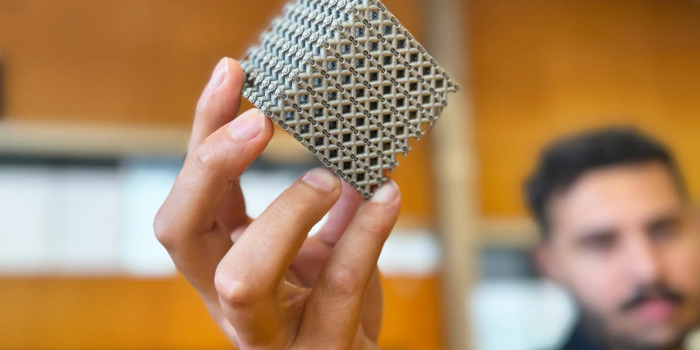Researchers at RMIT University have developed a groundbreaking metamaterial crafted from a common titanium alloy, boasting unparalleled strength and structural efficiency.
The newly unveiled metamaterial, detailed in the Advanced Materials journal, derives its strength from an unconventional lattice structure design. Manufacturing challenges and stress concentration issues within hollow struts have hindered traditional attempts to replicate nature’s hollow cellular structures in metals. However, RMIT’s Distinguished Professor Ma Qian and the research team overcame these obstacles by optimising a lattice structure using advanced metal 3D printing technology.
The lattice structure, comprising hollow tubular elements with a thin band running inside, facilitates even stress distribution, enhancing both strength and lightness. The team minimised stress concentration points by effectively merging two complementary lattice structures, mitigating premature failures commonly observed in conventional designs.

Utilising laser powder bed fusion, the researchers successfully fabricated a titanium lattice cube, demonstrating a remarkable 50% increase in strength compared to the strongest cast magnesium alloy WE54 of similar density used in aerospace applications. The innovative double lattice design disperses stress more evenly and deflects cracks along the structure, further enhancing toughness and durability.
Lead author Jordan Noronha emphasised the scalability and versatility of the printed structure, highlighting its potential applications ranging from medical implants to aerospace components. The material’s biocompatibility, corrosion resistance, and heat resistance make it a promising candidate for diverse industries.

While the technology to fabricate this metamaterial is still evolving, the team envisions broader adoption as advancements make metal 3D printing more accessible and efficient. The metamaterial’s resilience to high temperatures, up to 350 °C, could be further enhanced with heat-resistant titanium alloys, expanding its utility in aerospace and other high-temperature environments.
Looking ahead, the team aims to optimise the material for maximum efficiency and explore its applications in various industries. Collaborative partnerships with industry players are encouraged, facilitating the translation of research into practical solutions.


